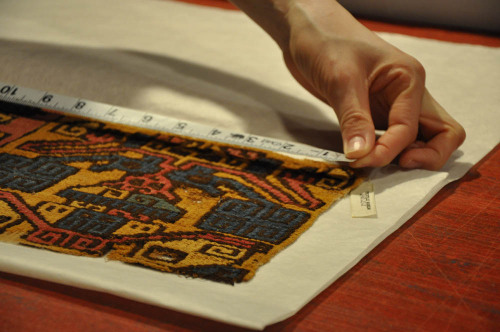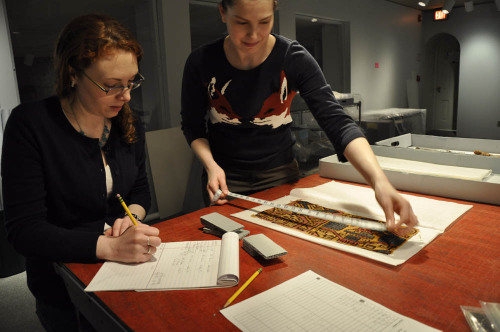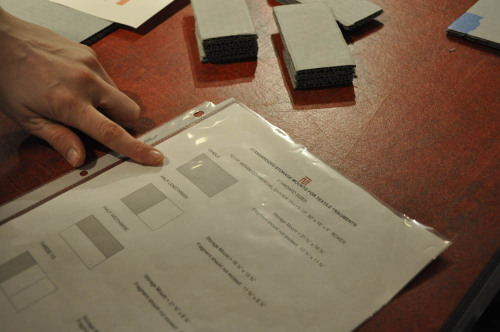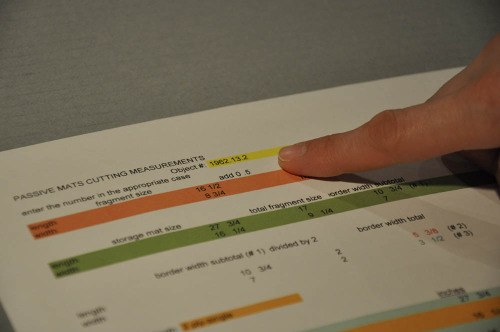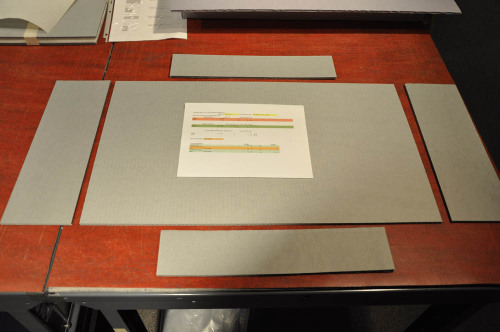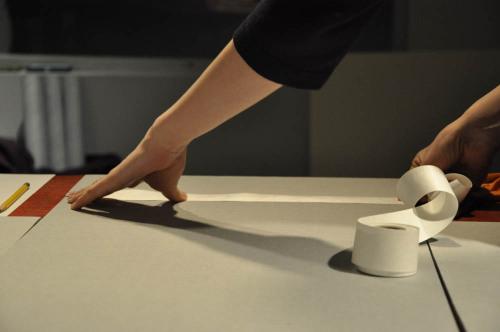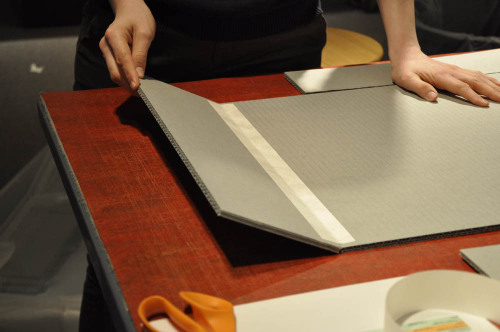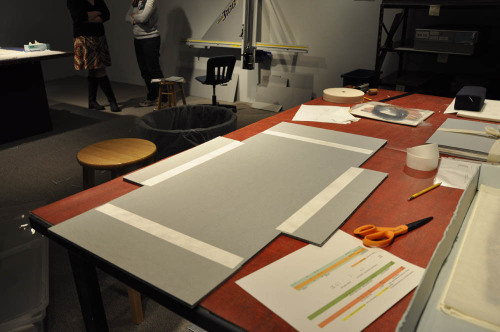Passive Mats (Part 2) In our last post, we explained what passive mats are, and why we are usin
Passive Mats (Part 2) In our last post, we explained what passive mats are, and why we are using them to store and transport fragile fragmentary textiles. Here, collections management interns Julia Grasso and Christine Hogan demonstrate the process from start to finish. First, the textile must be measured. Based on their results, Julia and Christine determine that this piece needs the largest mat size for the selected box. They input the dimensions into a spreadsheet that calculates the hinging flap dimensions based on the size of textile and the size of the mat base board. Julia then cuts the base board and flaps, numbers each with the object number, and lines them up against the sides of the mat. Using Tyvek tape, she attaches the four flaps to the base board and ensures that they can independently hinge. The flaps of the mat are then opened to receive the internal elements of the mat. Stay tuned to find out what happens next! -- source link
Tumblr Blog : gw-textile-museum.tumblr.com
#tm collections#museum collections#archival#museum storage#passive mats
